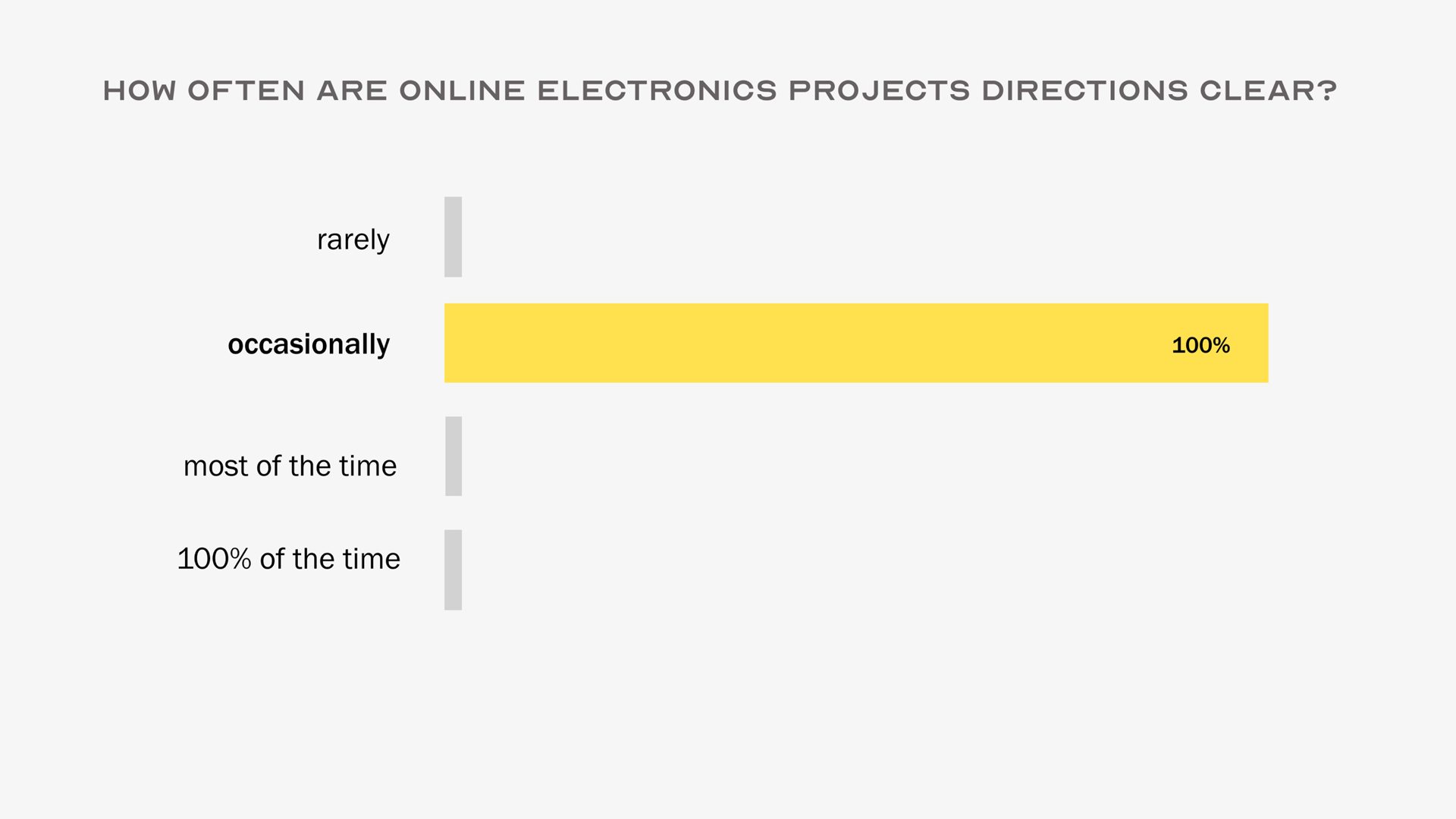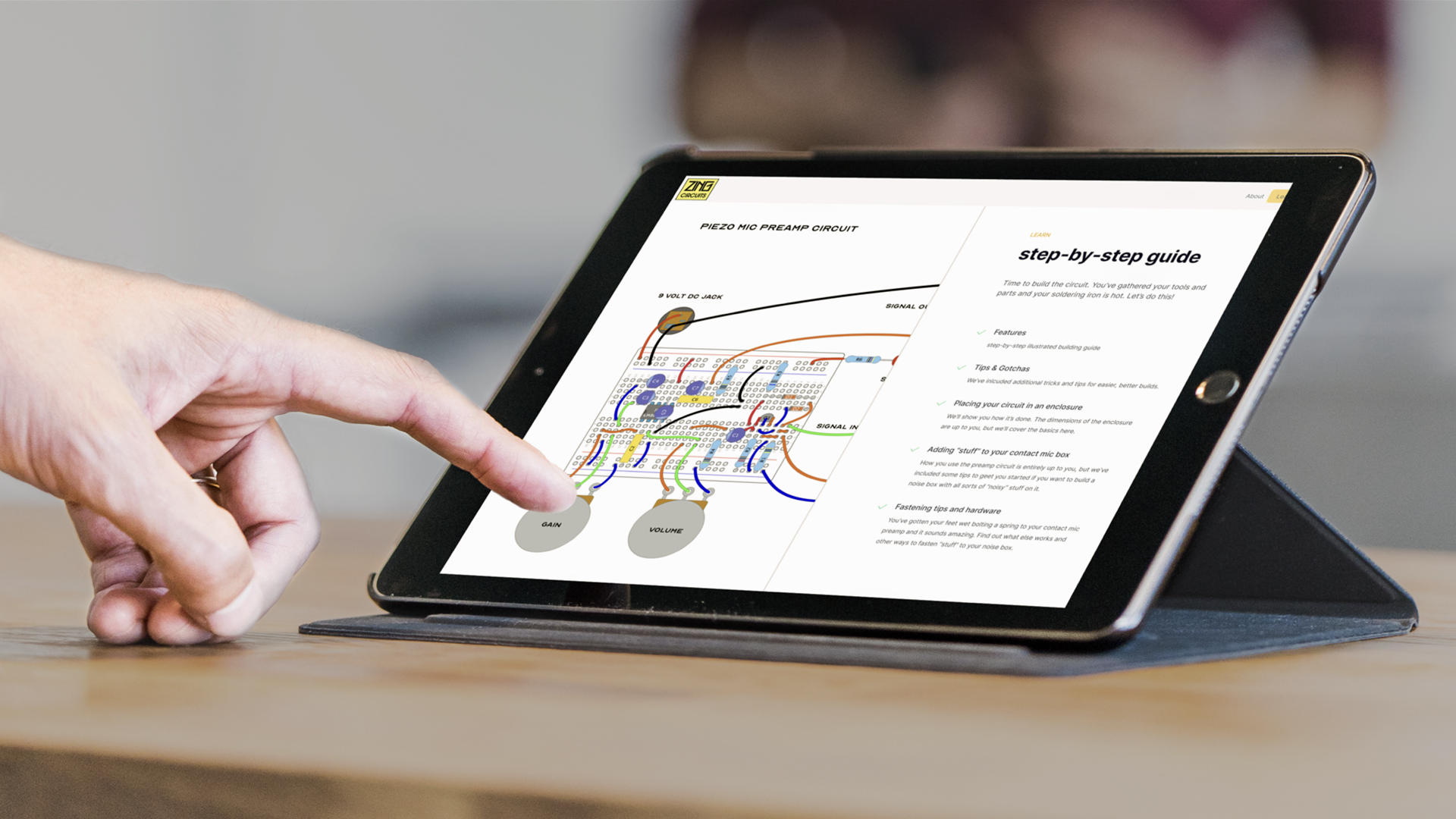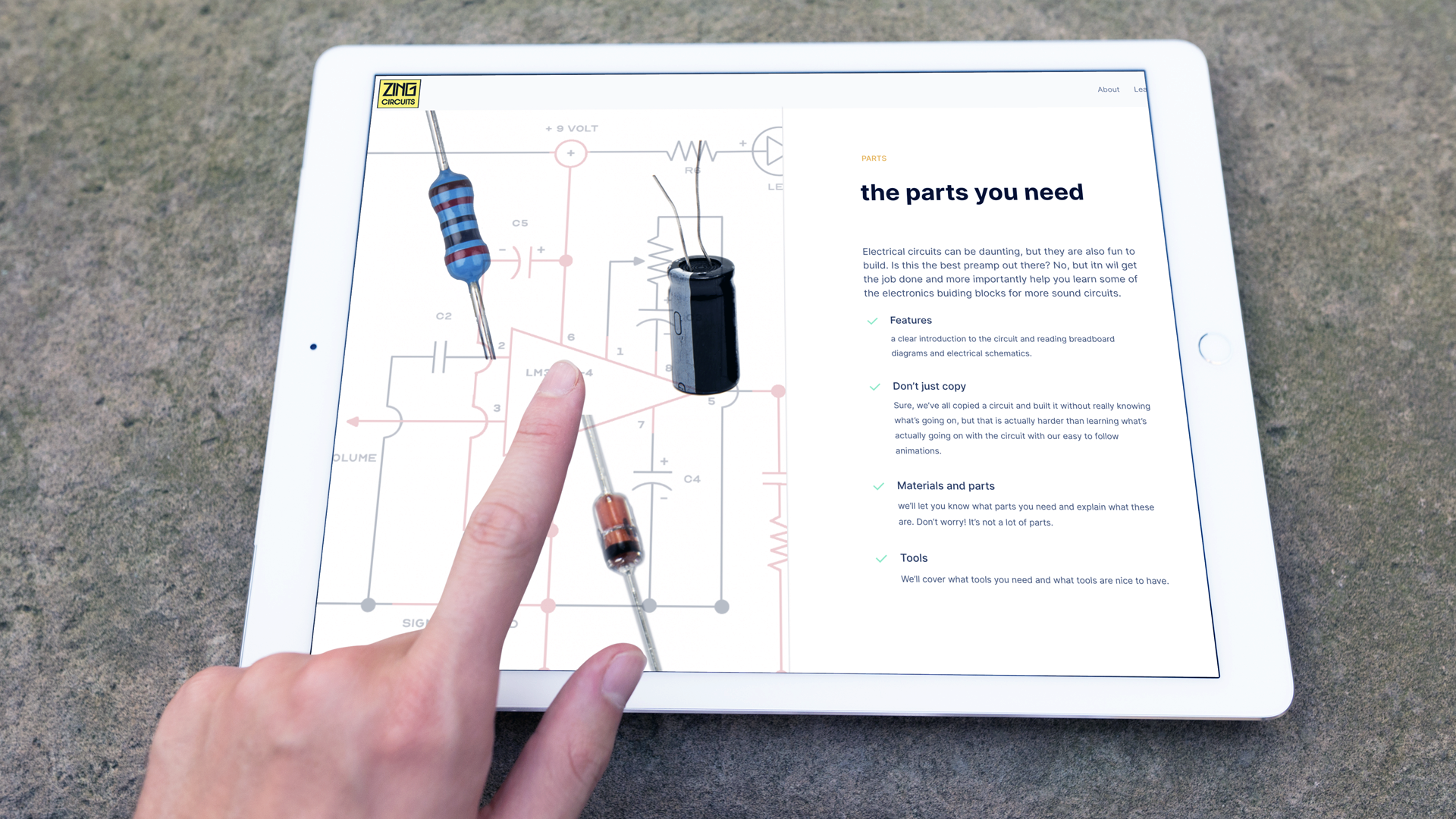A Fascination with Noise: Contact Mics, Everyday Objects, and Product Design
Contact mics exist at the intersection of experimental music, sound art, analog electronics, and DIY-making culture. In her thesis, Anne Keating explores the design challenge of analog sound circuits, contact mic'd instruments, and the DIY maker culture surrounding the contact mic. She looks at the space occupied by noise artists and boutique guitar pedal makers who build contact mic'd noise devices. She examines how building contact mics serve as a gateway to analog circuit building and why this activity is relevant against the backdrop of digital devices and experiences.
During this project, Anne learned to build contact mics, analog circuits, and noise devices while exploring and extending the form of this technology and its products. By focusing on DIY makers, Anne investigated the implications of how contact mics not only challenge modern disposable technology but also create new ways of listening and interacting with everyday objects. Anne's thesis, A Fascination with Noise: Contact Mics, Everyday Objects, and Product Design, documents and explores the culture and implications of this small piece of technology.
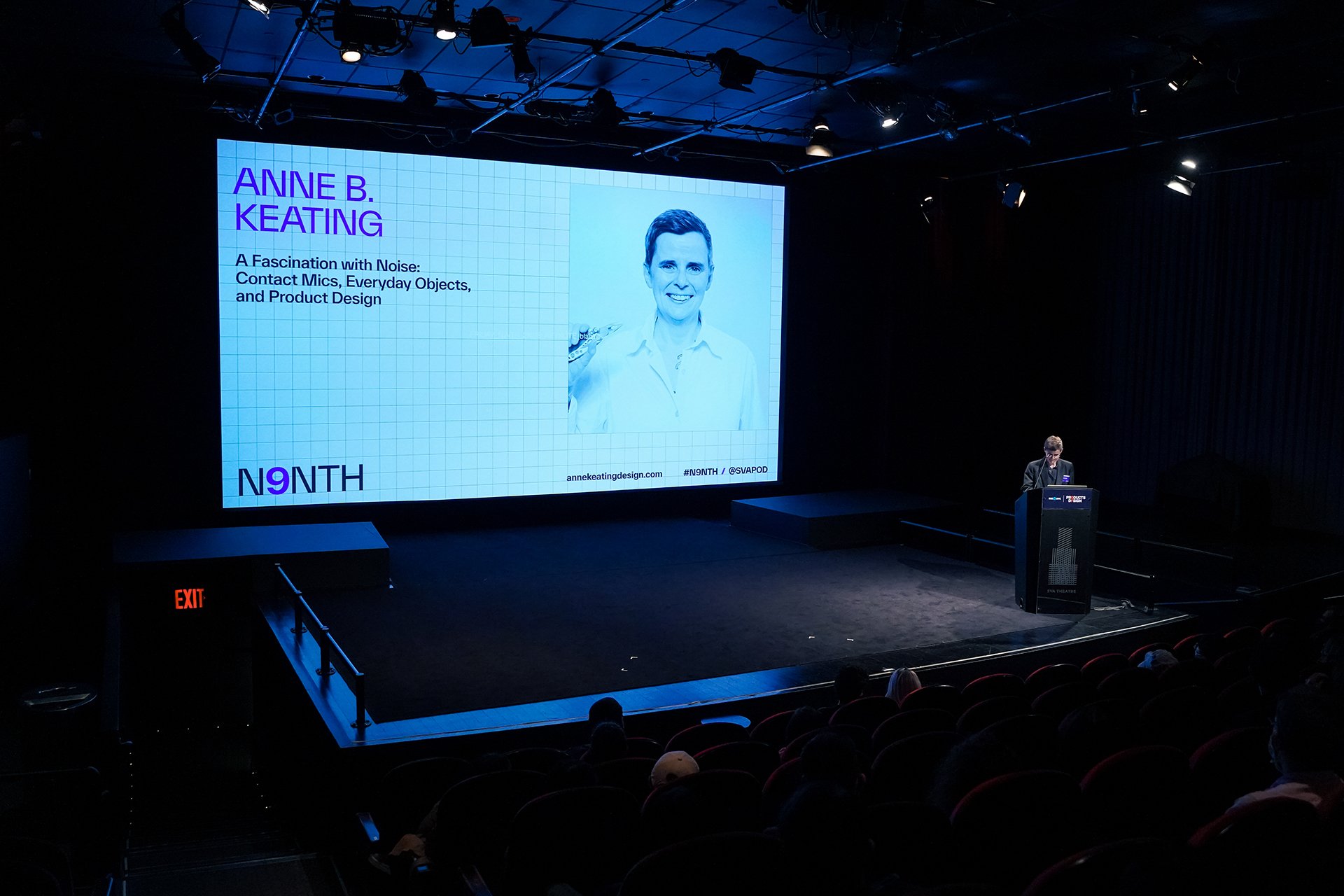
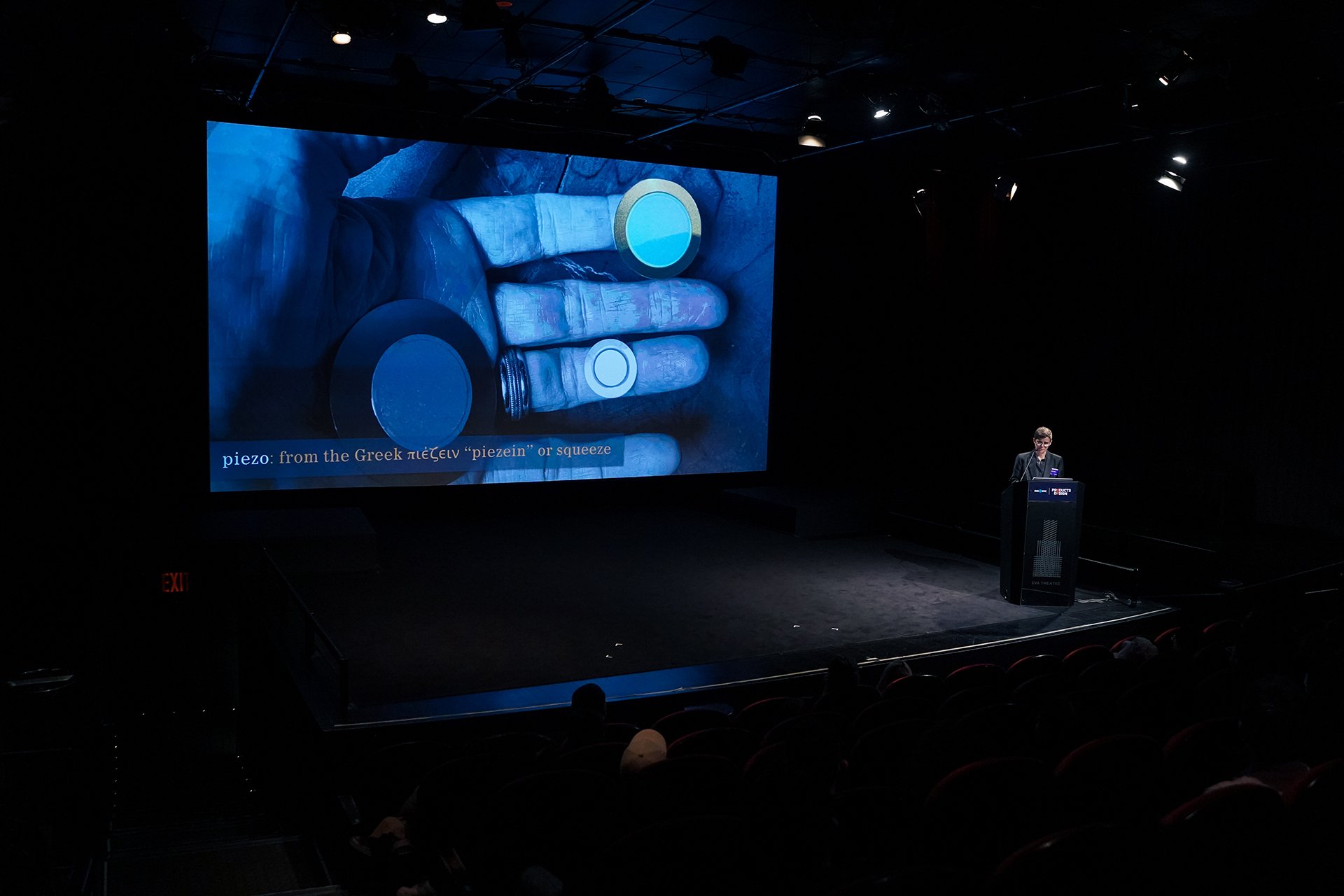
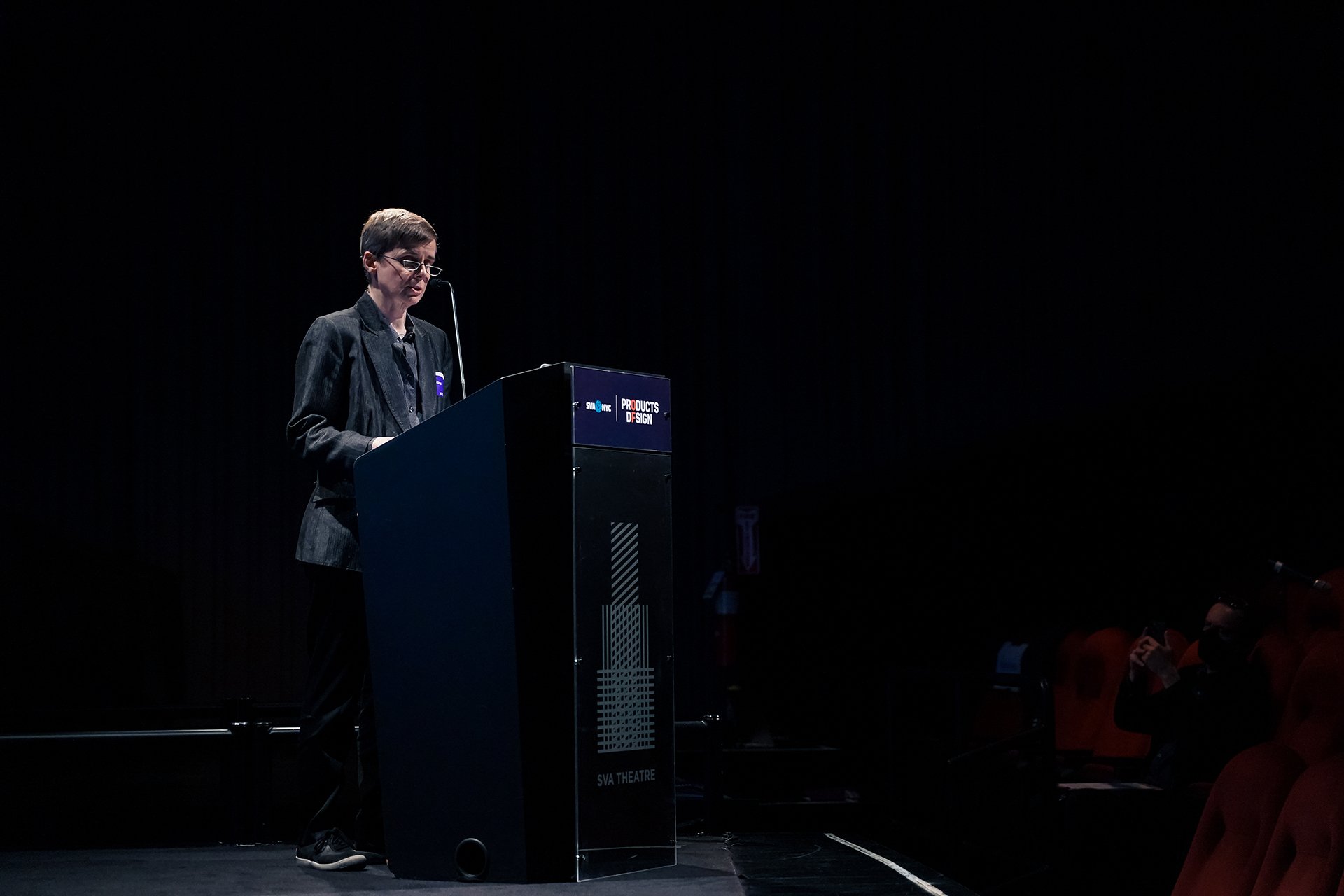
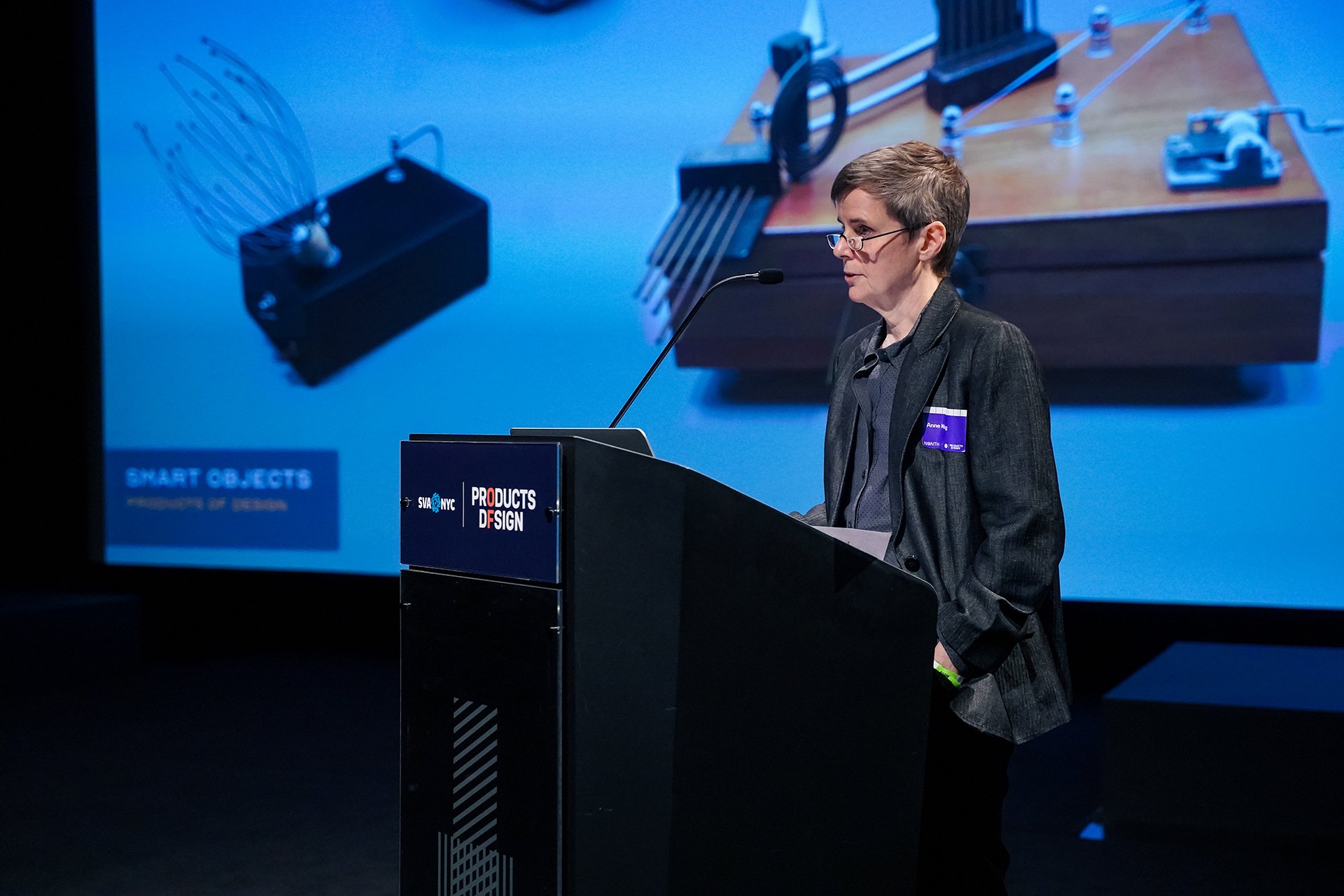
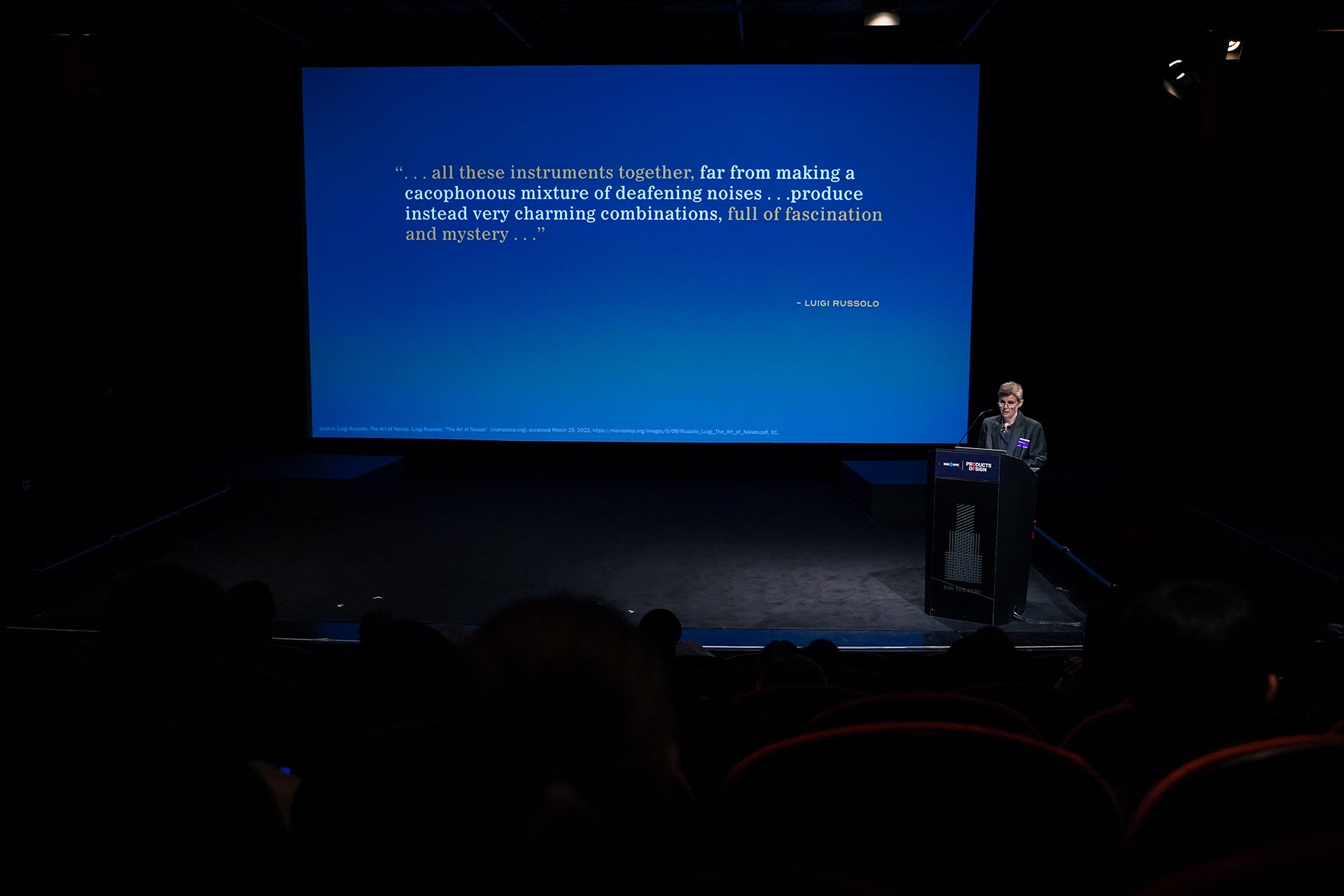
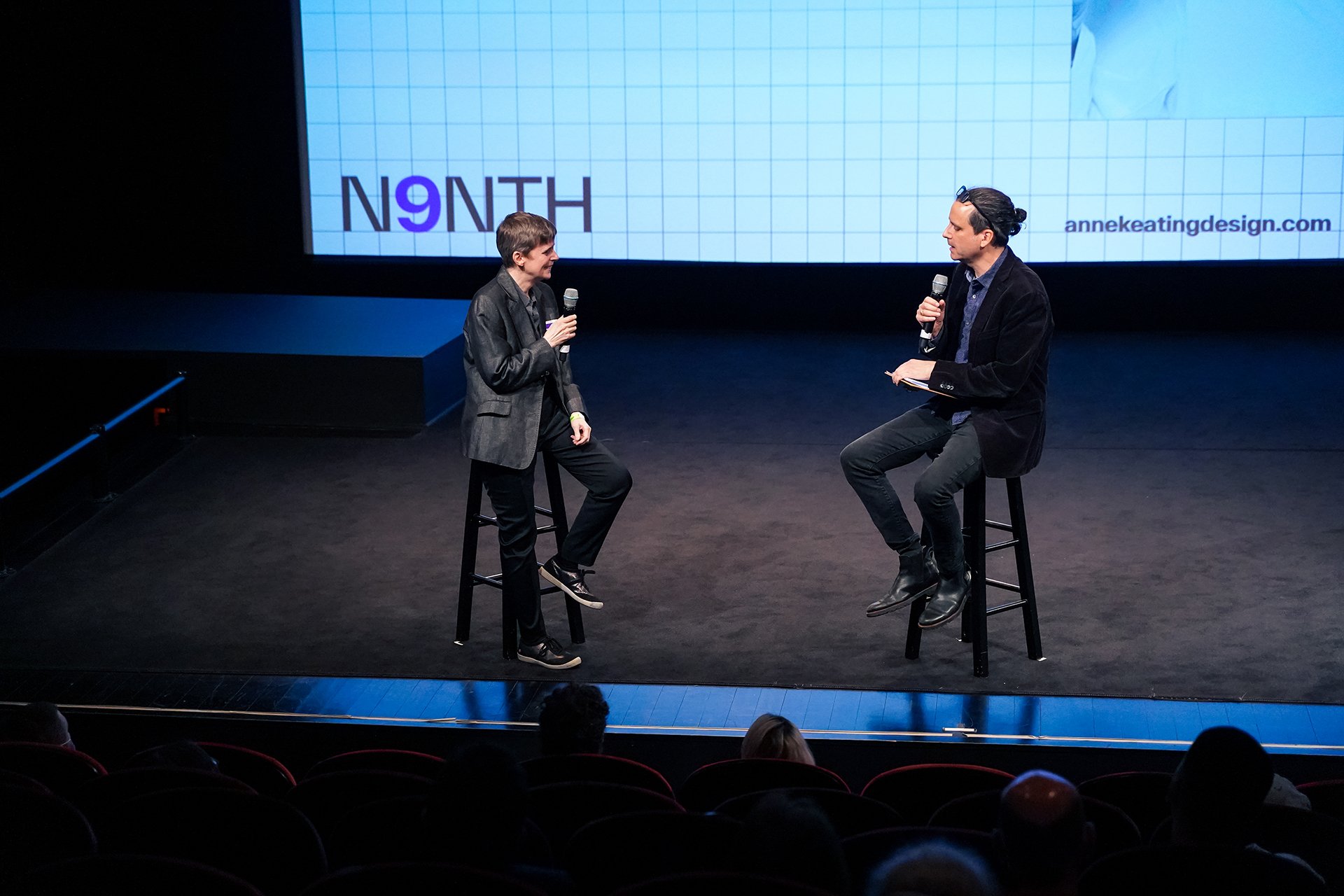

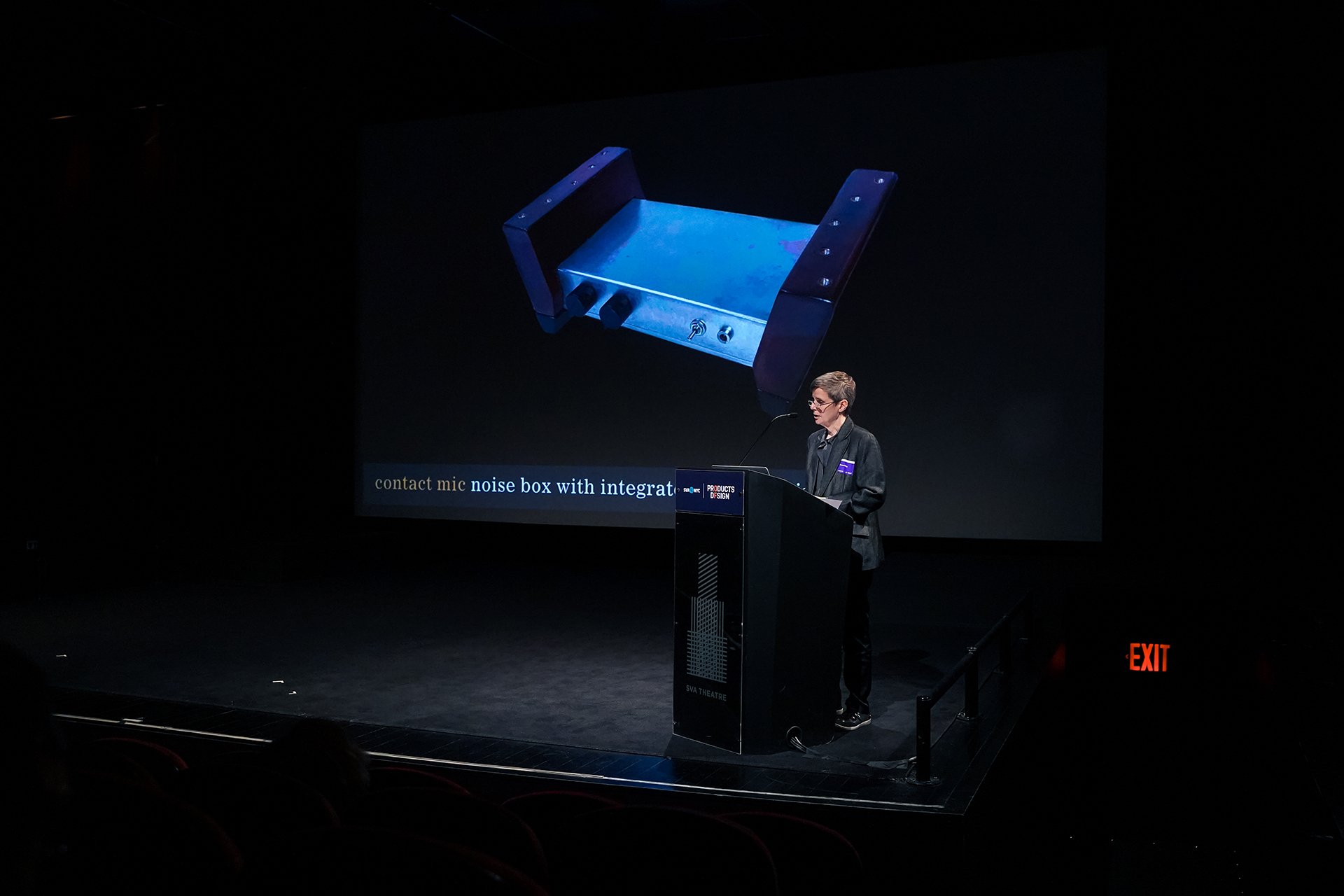

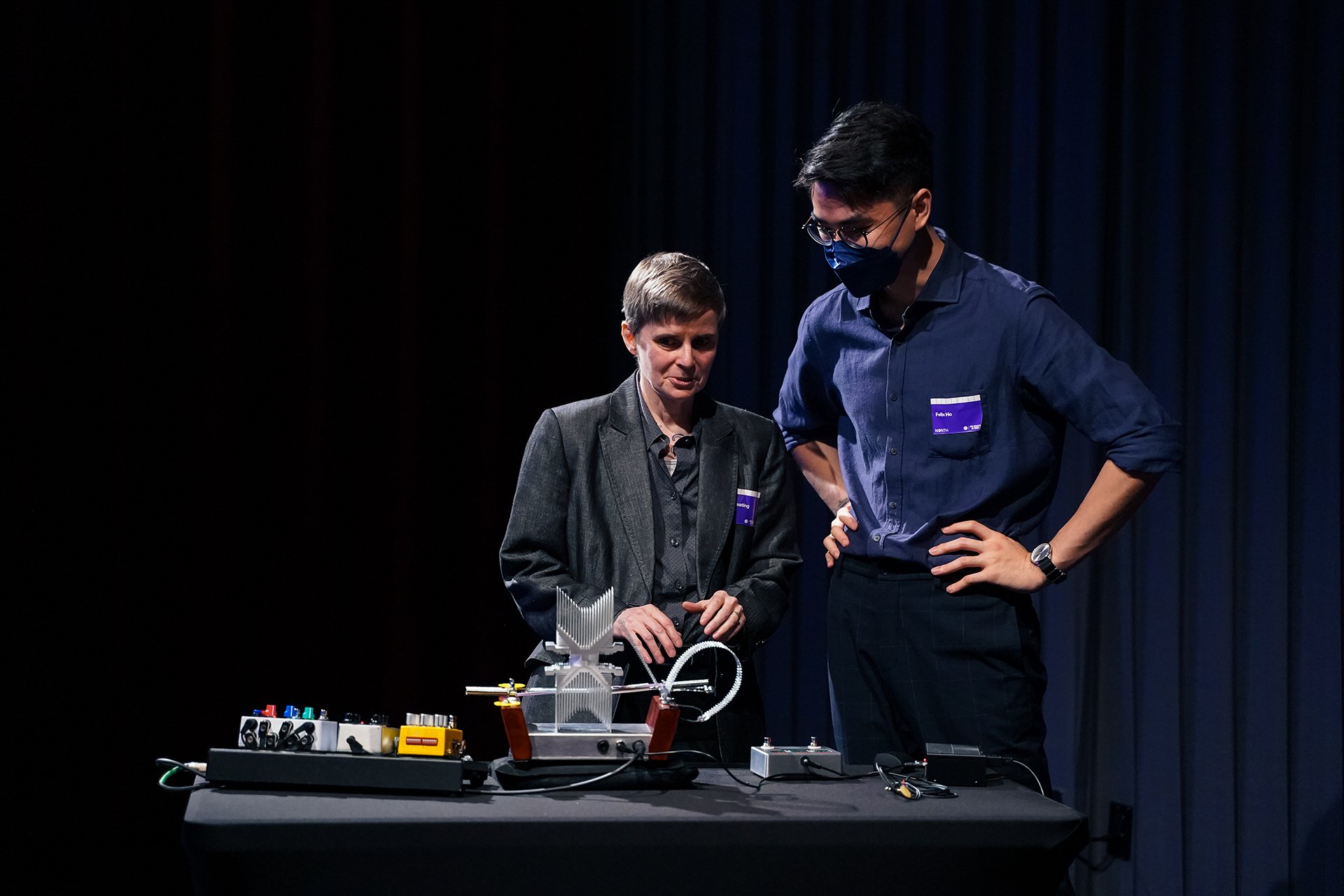
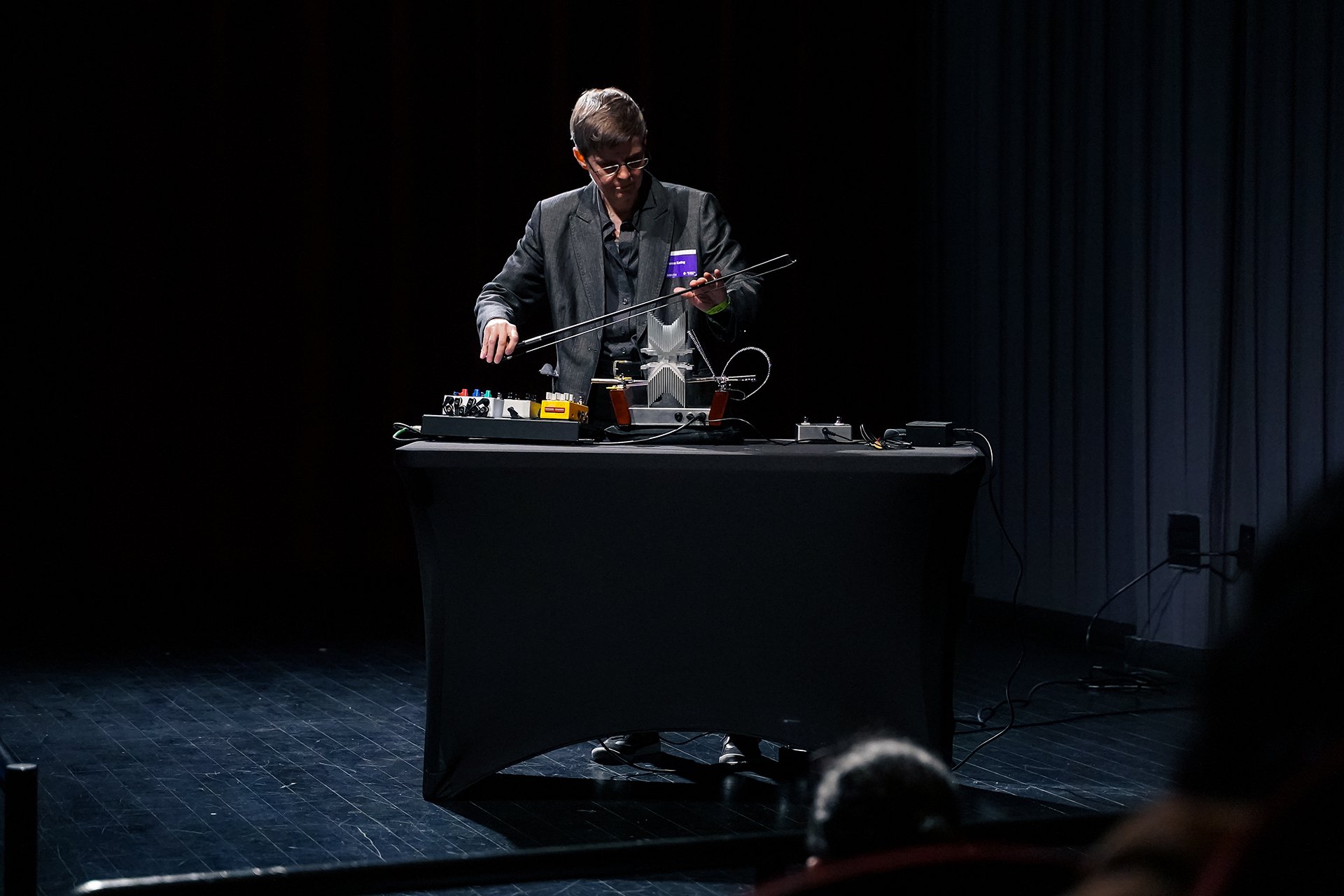
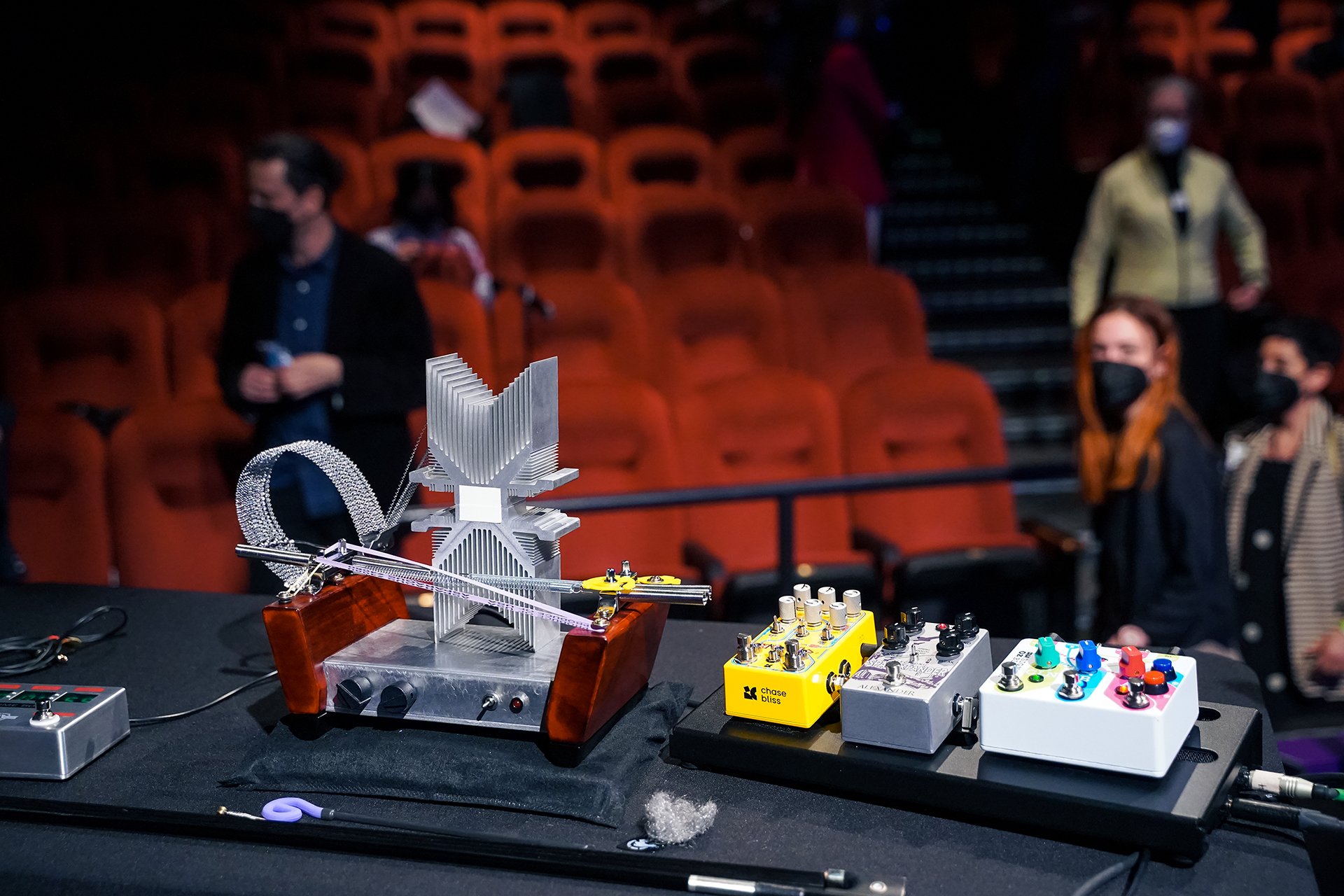
Contact mics challenge modern disposable technology and create new ways of listening and interacting with everyday objects.
Prior to joining the MFA Products of Design program, Anne had never heard of a contact mic—nor did she have a background in sound. During the Smart Objects course taught by Victoria Shen, Anne soldered together a piezo disc and two wires and plugged this into an amplifier. She describes the experience as being transformative. The contact mic revealed unexpected sounds from everyday objects. Not satisfied with simply finding objects to listen to with her contact mic, Anne went online and discovered a community of makers and musicians working with contact mics. “They were placing contact mics inside boxes, sticking items on the outside, and plugging these creations into amplifiers,” she shares. This led Anne to make her first contact mic'd noise boxes for her final project in Smart Objects. The end of the course was just the beginning, though. Her noise boxes led to the design of an analog sound circuit to clarify the sensitivity and enrich the audio output of the contact mic. Her circuit led to an exploration and refinement of the noise box design.
Hidden Soundscape
To introduce people to the unique sounds of contact mic'd objects–but without the requirement of gear or soldering—Anne designed Hidden Soundscape. This self-guided sound experience had an additional goal of replicating some of the serendipitous discovery noise artists experience when working with contact mics. Wall signage was linked to the contact mic'd sound files via QR codes. Scanning these, participants were taken to the sound file page. Additional links took participants to a website detailing how each sound was made and a playlist. Google Analytics was used to track the experience.
In our digital age, a working knowledge of analog circuits holds vital design and problem-solving skills essential for digital circuits design.
With a handful of inexpensive parts and a straightforward build, a contact mic preamp is a good electronics project for people who have soldered together a contact mic. Information on how to build these can be found online, but these instructions can often be chaotic, inaccurate, and incomplete for novice builders. There is a need to address this. Many makers who are drawn to electronics do not have a professional background in electronics, and half are self-taught. When Anne conducted user testing with a group of novice electronics builders, all reported that they only occasionally found online instructions clear enough to build successful projects. To address this need, Anne developed two design solutions: the Toymaker mentoring service and the Step-by-Step Guide.
Toymaker
Building circuits is not intimidating, but it can be frustrating, especially if one is new to analog sound circuits. Toymaker is a service that provides mentoring for new analog circuit builders. This service matches "toymakers," or passionate and knowledgeable experts, with novices to analog circuits. In Toymaker, beginners take a survey and then, armed with a simple textbook, are matched with a mentor they work with over Zoom in real-time.
Anne explains that this service grows out of the loss of a dedicated analog electronics hobbyist culture with its magazines, companies, and parts stores. “This is not just a niche need,” she says. “In our digital age, a working knowledge of analog circuits holds vital design and problem-solving skills essential for digital circuits design.” The Toymaker service provides a way to ensure this knowledge is preserved and passed along.
Step-by-Step Guide
The Step-by-Step Guide is a design exploration focused on how to write a better instruction set for DIY novice analog circuit builders. While designing and building her contact mic circuit, Anne thought it would be useful to have all the information a new circuit builder needed in one spot. Based on her circuit, the Step-by-Step Guide laid out the information required to build the circuit, but in a format that emphasized understanding how the circuit worked in the three common layouts analog circuits are presented in—physical circuit, breadboard layout, and electrical schematic.
Finding and adding resonant objects is embedded in noise boxes by design.
Laying these three "images" of the circuit side-by-side, she highlighted the signal flow from the contact mic out to the amplifier or speaker. This was a useful way not only to develop an understanding of the work each part was doing in the circuit, but also for identifying the main cast of characters among the parts and setting those off from the supporting cast of grounds and subroutines. The goal was not to limit a novice to only following a set of instructions but to use those instructions as building blocks for future projects and to follow other instruction sets more efficiently. In addition to the circuit layouts, she also designed an illustrated parts list that included any special considerations for a given part and a clearly illustrated reference to where the part was located in the circuit.
Capercaillie Noise Box
While working on her preamp circuit, Anne also designed and built noise boxes. Finding and adding resonant objects is embedded in noise boxes by design. As she built hers, she noticed that when finished, they were locked. To add any more resonant objects or get new sounds out of them, she had to build new noise boxes. This led to the development of the Capercaillie Noise Box – a noise box with limitless configurations on the outside and Anne's contact mic preamp circuit inside.
The noise box could be easily disassembled as needed. The metal surface was kept clear to place loose items upon, while screw mounts on the end-caps permitted hardware to be easily attached. Branding was done by adopting the Capercaillie, a wild bird, as a mascot since this bird's call sounds just like a contact mic'd noise box.
Anne Keating's thesis is the culmination of ideas that all began with a contact mic—a small piece of technology. She explains that in retrospect, she acknowledges that three themes are embedded in this thesis: access, technology, and listening. For Anne, accessibility is embedded in contact mics and noise boxes. Anyone can pick up a contact mic and make interesting noises with it. It's a paradox that classically trained musicians can use these tools to extend their practice, but non-musicians can have a rich sound experience with them as well. In her own circuit-building and projects about circuit building, Anne was aware of how much we are surrounded by digital, locked in, and disposable devices. Yet we are at a distance from understanding how these work. When held up to this, analog circuits seem less of a niche technology and more like an important skill and pursuit to preserve.
Thinking about her own personal experience with contact mics, Anne found herself asking the "what if" pandemic question. Her version of this question goes something like, "would I have gotten into contact mics if it hadn't been for the lockdown?" Anne's experience with contact mics is indelibly linked to the change in sound and listening during the pandemic. During the lockdown, everything sounded different. In the absence of street life and traffic, quieter sounds were revealed. The suspension of live music and performance added another silent layer to this. The contact mic'd sounds from quiet objects filled this vacuum as she worked in her bedroom building noise boxes.
To learn more about Anne Keating’s work, take a look at her projects in more detail at annekeatingdesign.com.
















